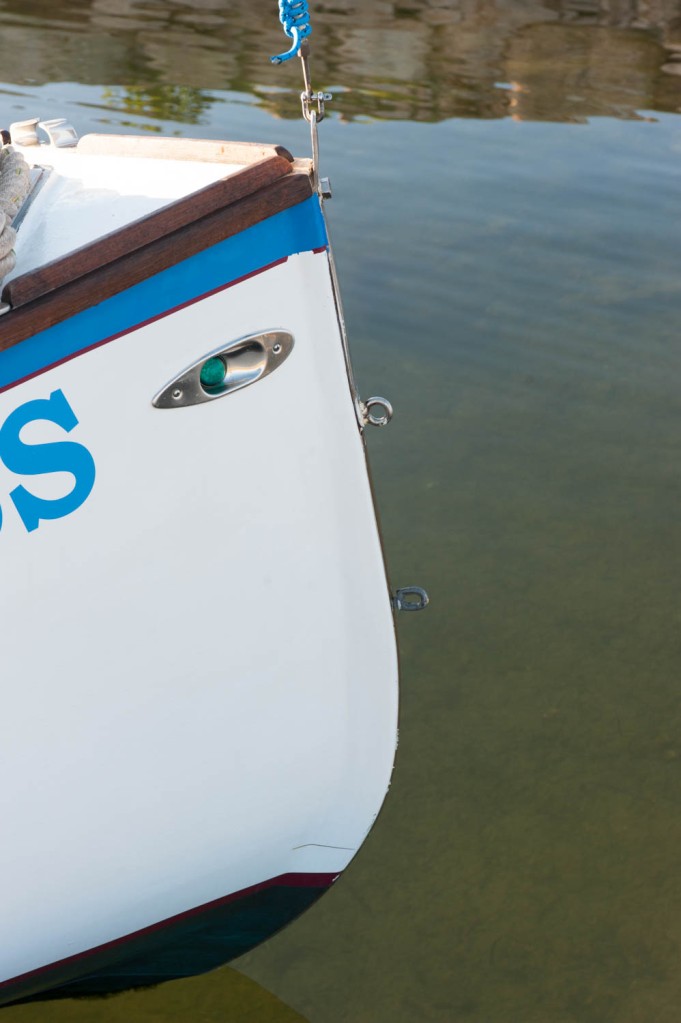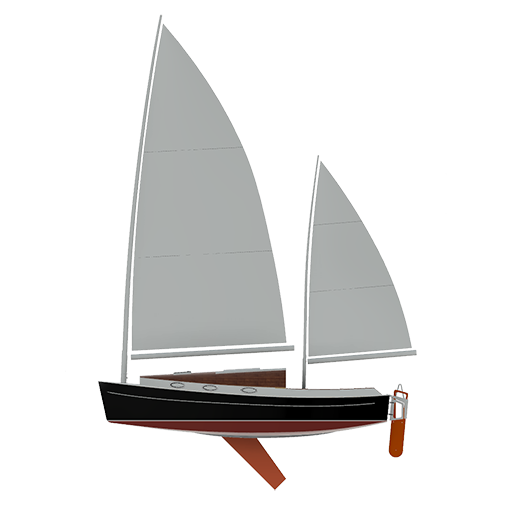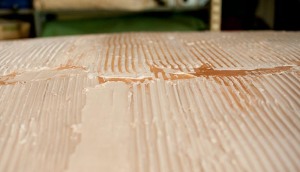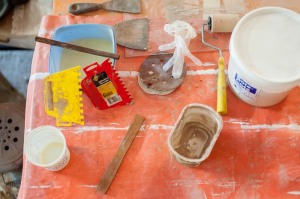With an NIS, there are many details that are left to the owner-builder to decide. It was one of Bruce Kirby’s principals with this range. He didn’t want to be too prescriptive. Sharpies can be seen as a tight fitting boat, and such a thing is best ‘custom fitted’.
This can be frustrating and induce procrastination, but if you tackle it with whatever confidence you can muster, you will be rewarded with something unique.
In this instance, the outer stem needed sorting. I set the stem face way back when I laminated up the inner-stem and rebated the sides into it (https://wordpress.com/post/paulsboat.wordpress.com/241), and it ended as a flat face.
I’ve lived with this flatness for many years and it has grown on me as a stoic workboat detail, but it has always needed an outer stem to cap it off and provide additional protection.
If you review any of the modern renderings, the sharpie stem appears to be quite flat, but in looking at what other builders have done, you will see a wide variation of bow shapes.
Troy of Adelaide Timber Boatworks gave me a nudge to make a decision on the outer stem profile. So on one quiet Sunday, I mocked up a profile that came from an idea that has been swimming around in my head from the beginning…the catboat heritage.

Sharpies seem to carry some catboat heritage. While they are long and thin and catboats short and broad, sharpies carry a mast in well forward in the bow, they are cat-ketches. Sharpies were workboats as were catboats, hauling nets over the side, running into shallows, dragging for oysters…
A catboat’s bow has always charmed me. They appear to sit plumb vertical, and almost rake aft. It’s a strong, purposeful look. So I mocked up a curve that fairly left the forefoot and pushed forward and headed vertical as it went up.


Troy encouraged me on this path, and took my mockup and added further energy to the curve, and while it doesn’t rake aft, nor sit vertical, it feels like it may.
I love it.








